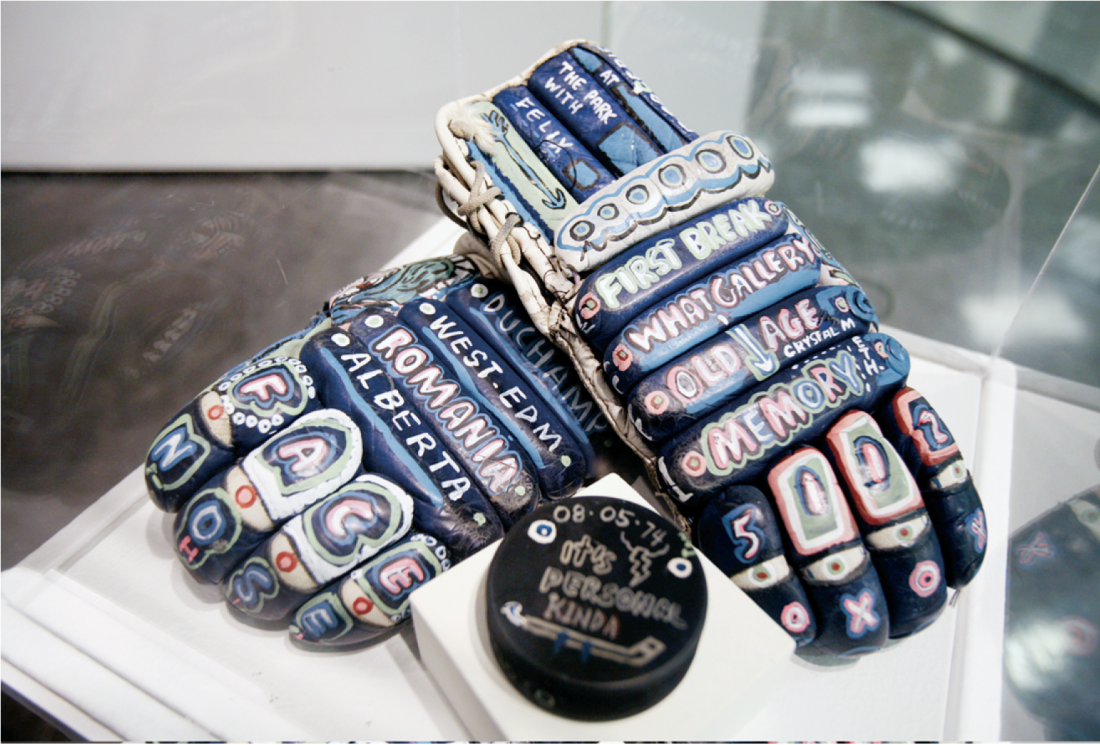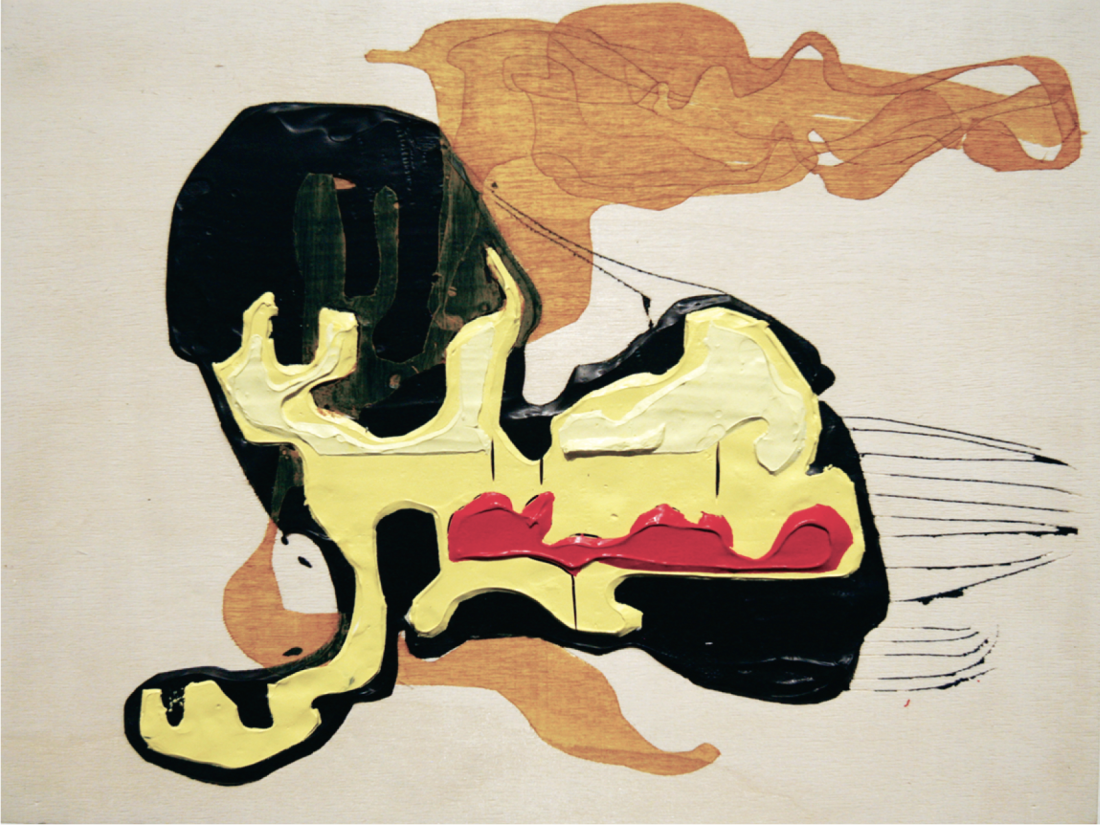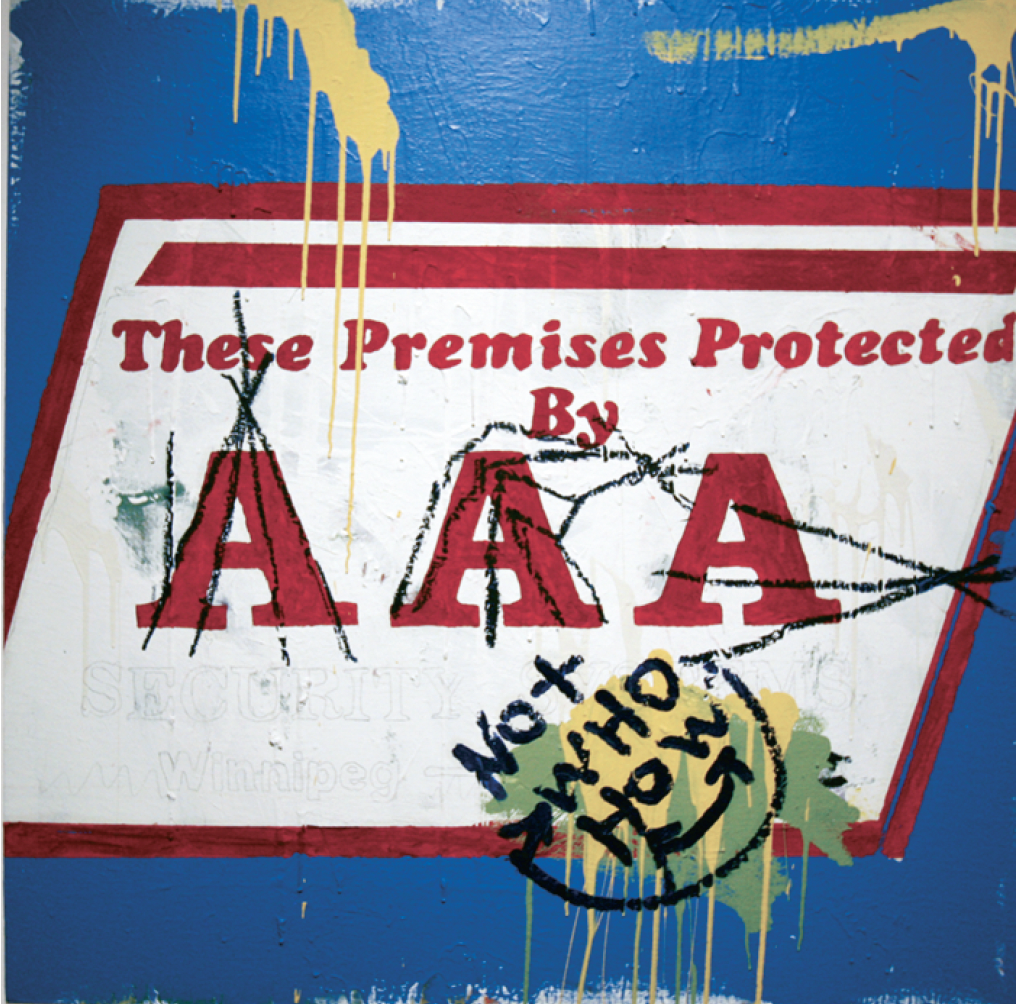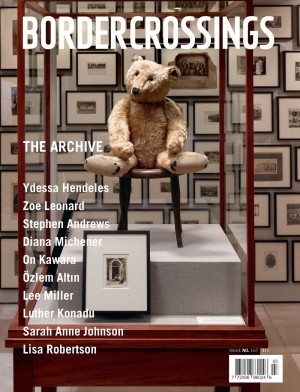Painter Pants
In a recent on-line opinion poll regarding important cultural symbols of the 1970s, painter’s pants (the utilitarian-item-turned- trendy) ranked somewhere between Women’s Lib and R. Crumb’s “Keep on Truckin’” character, Mr. Natural. This is the curatorial premise with which Jenny Western approached her exhibition “Painter Pants” at the Art Gallery of Southwestern Manitoba. Western gathered six male painters born during feminism’s second wave, who came of age throughout the third wave’s Riot Grrrl phase. So the question put forth is whether their work divulges a masculine identity influenced by the emerging gender equality of Women’s Lib or the accused misogyny of Mr. Natural. This impossible question is qualified with the understanding that these artists are painters—a medium riddled with masculine rhetoric in the 20th century. An emerging but smart curator, Western has chosen six painters with varied backgrounds and approaches to painting. Mirroring the show’s title (as something to be rated between two extremes), visitors to the AGSM likely noticed the differences in the work present: strong or mediocre.
There is Neil Dyck, a Winnipegger now living in Vancouver, who sculpts acrylic paint with a sedate, lush, abstract quality. Dyck’s Friends Of Family 1, and 2, 2007, stand out as particularly successful attempts at something new in an old medium. His exploration of the third dimension reads like topography or maybe an ode to the likes of Oldenburg and his ’60s sculptural successes.

Jason McLean, Hockey Gloves, 2006, acrylic ink on painted found object. Courtesy Art Gallery of Southwestern Manitoba, Brandon.
Another Winnipegger, Roger Crait, is represented by five expressionistic works in oil on canvas. Crude in the best sense of the word, Crait’s Colonial Mop, 2007, consists of a sketchy, shaman-like, skeletal figure presented with a bloody version of the titular tool, while he attempts to juggle a bottle and a wrench, which are actually affixed to the surface with gloopy clear resin. Red, yellow, black and white, the four sacred colours of Canadian Aboriginal iconography, stand out on this otherwise beige canvas. Not Who, How, 2006, with its reference to land claims, showcases Crait’s politically charged appropriation technique by slightly altering a simple AAA security logo into a depiction of dilapidated teepees.
In stark contrast to Crait’s urban sensibility is Aaron Paquette’s clichéd Aboriginal Woodlands-inspired mixed media on canvas. Paquette’s tired image of a once-inspiring Trickster character lacks lustre and is void of any significant statement. The raven-headed figure is positioned somewhere between the rural and the urban with prairie city lights shining in the background. This is an apt metaphor for the artist himself, living in Edmonton but not quite up to speed, trying to find his way.

Neil Dyck, Fort Garry 116, 2007, acrylic on canvas, 8 x 12”.
Not completely dissimilar is Lethbridge-born, New York-based Patrick Lundeen and his two large acrylic paintings on unstretched canvas. Lundeen’s Slightly Homo Erotic Saint Michael at the Heavenly Eviction, 2006, is an overly decorative figural representation of masculinity. This eight-foot-high painting depicts a pin-up type from time past; a muscled wannabe Rock Hudson that doesn’t hold a candle to Tom of Finland on a bad day.
An anomaly to the trend in “Painter Pants” is Jeff Nachtigall, who has been producing stellar work in Saskatchewan for some time now. After a residency with the Saskatchewan Regional Health Authority, Nachtigall has stepped back, I hope momentarily, from his smarter and more personal work with the recent poliptych, Faust’s Garden, 2007. This work was inspired by the work of a woman Nachtigall became acquainted with during his residence program. She had, apparently, just begun revisiting art making in a therapeutic sense. The vibrantly coloured and heavily worked canvas resembles felt appliqué; birds mingle in a surreal garden where the flora rivals their size. The viewer is left to reminisce over the artist’s more successful work on paper or cardboard, which had been shown at the Art Gallery of Calgary in recent years.

Roger Crait, Not Who, How, 2006, oil and mixed media on canvas.
Adding a bit of west coast flavour, Vancouver-based Jason McLean doodles on various sporting equipment: a basketball, hockey gloves with puck, and baseball with glove. McLean offers personal messages and diaristic elements delivered through the use of meandering handwritten texts mixed with drawings, which resemble petroglyphs in primary colours. For example, his hockey gloves read: “At the park with Felix.” This nod to sentimentality is welcomed alongside Crait’s irony and other more over-the-top, yet empty, images such as Lundeen’s and Paquette’s.
Jenny Western positions a show like “Painter Pants” in the crosshairs of criticism by going the extra mile—which should be commended. Lesser curators have sufficed with a superficial glance at painters, focusing on technique, genre, style, etc. However, Western dared to question the political implications and, for that, the work in “Painter Pants” actually may be outshone by her thesis. She would have benefited from tightening the show to three painters and showcasing more of their work. ■
“Painter Pants,” curated by Jenny Western, was exhibited at the Art Gallery of Southwestern Manitoba from July 5 to August 18, 2007.
J.J. Kegan McFadden is an independent curator, writer and current director of PLATFORM: Centre for Photographic and Digital Arts in Winnipeg.

